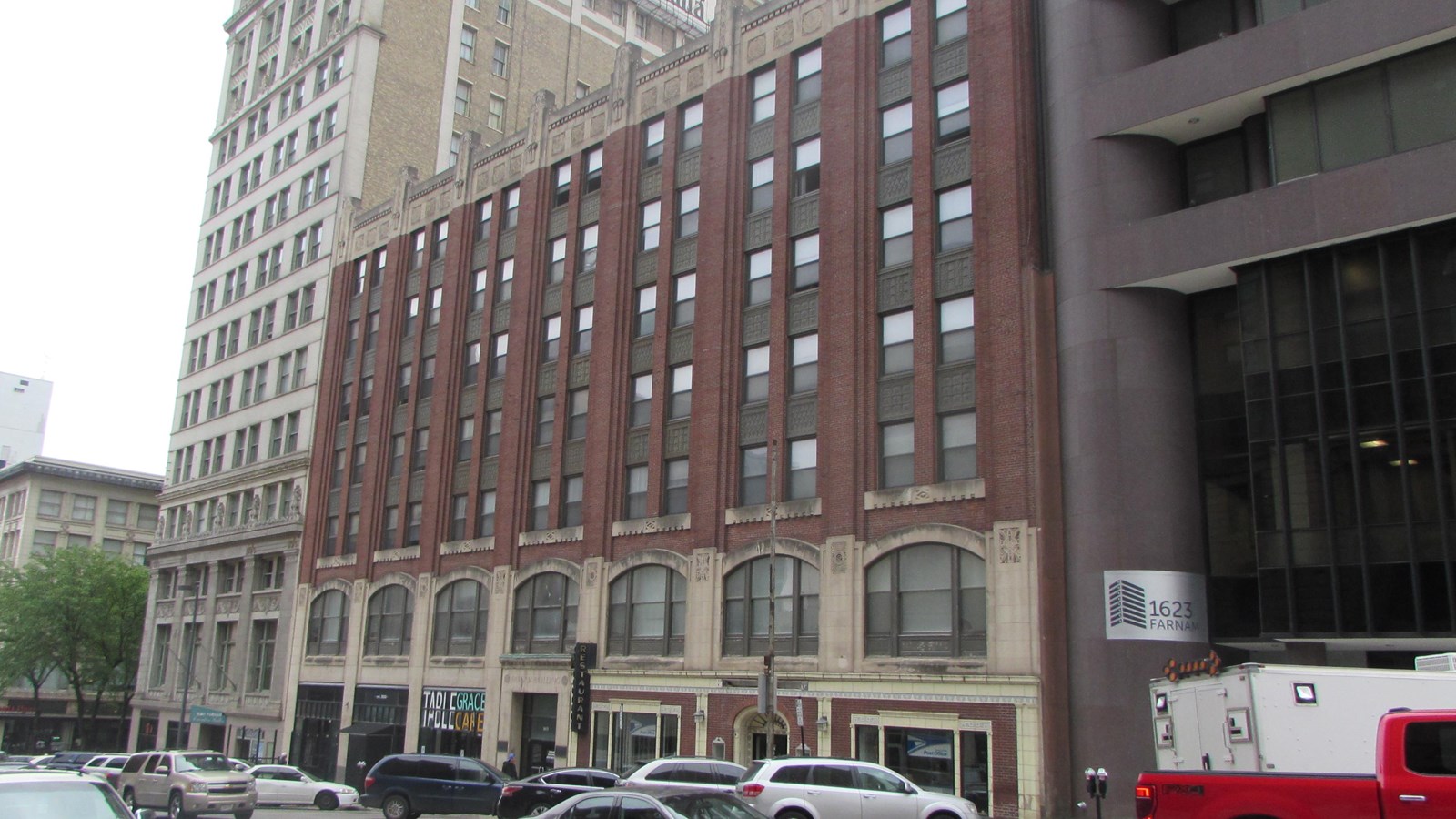Last updated: September 2, 2022
Place
The Farnam Building

David Calease, NPS
Quick Facts
Location:
1607-1617 Farnam Street
Significance:
Architecture; Commerce
Designation:
National Register of Historic Places
OPEN TO PUBLIC:
No
MANAGED BY:
Private Property Owner
The Farnam Building was designed by architect George Prinz as the corporate offices for the Byron Reed Company, the oldest real estate company in Nebraska. It was one of the last buildings constructed during Omaha’s “Golden Age,” before the economy stalled during the Great Depression. The Farnam Building, listed in the National Register of Historic Places, remains an integral part of the downtown business community.
The seven-story commercial building was constructed in 1929 in a Sullivanesque/Gothic Revival style. The building was designed for retail stores on the first two floors and offices on the third through seventh floors. Brick pilasters flank the windows and feature ornamental bronze spandrel panels between them. Above the seventh-floor windows are limestone crowns with ornamental relief that terminate in a monumental, Art Deco-style battlement. In 1939, noted Omaha architect John Latenser, Jr. rehabilitated the easternmost bays of the storefront level for the Northrup-Jones restaurant.
The Farnam Building is a residential apartment complex and is not open to the public but can be viewed from the public right-of-way.
The seven-story commercial building was constructed in 1929 in a Sullivanesque/Gothic Revival style. The building was designed for retail stores on the first two floors and offices on the third through seventh floors. Brick pilasters flank the windows and feature ornamental bronze spandrel panels between them. Above the seventh-floor windows are limestone crowns with ornamental relief that terminate in a monumental, Art Deco-style battlement. In 1939, noted Omaha architect John Latenser, Jr. rehabilitated the easternmost bays of the storefront level for the Northrup-Jones restaurant.
The Farnam Building is a residential apartment complex and is not open to the public but can be viewed from the public right-of-way.
